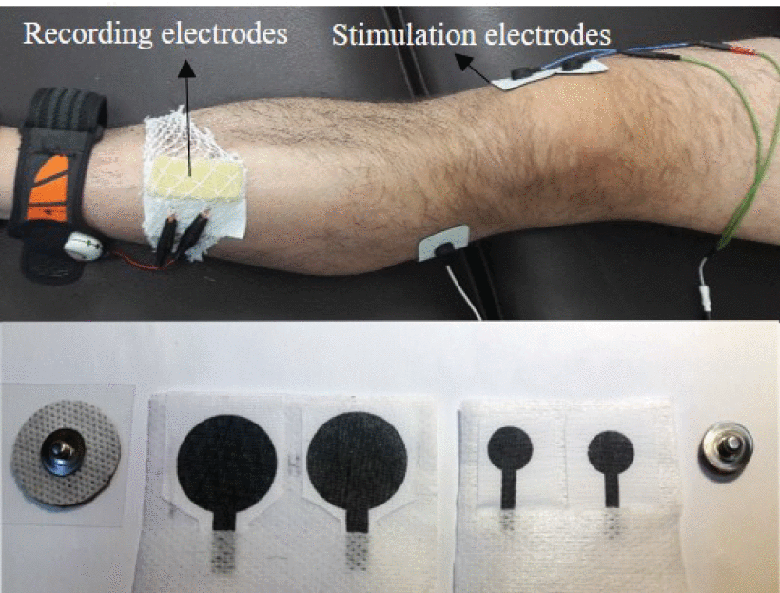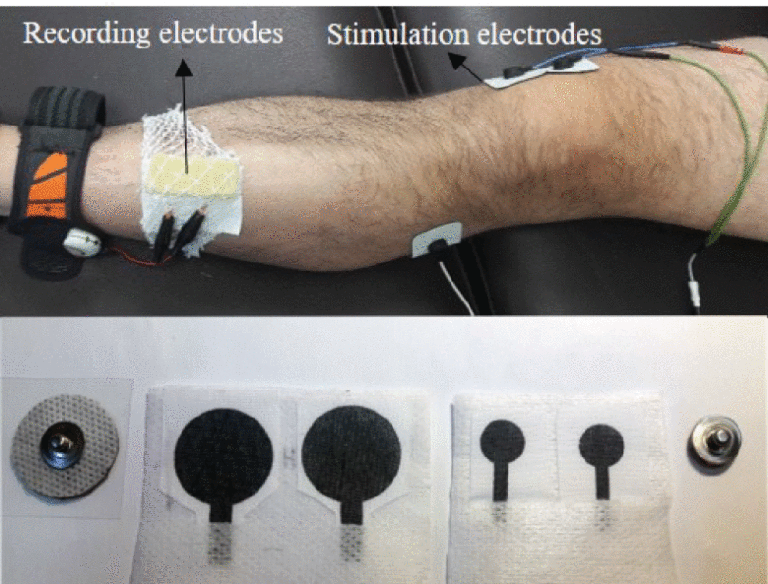
In recent years, the variety of textile electrodes developed for electrophysiological signal detection has increased rapidly. Among the applications that could benefit from this advancement, those based on surface electromyography (sEMG) are particularly relevant in rehabilitation, training, and muscle function assessment. In this work, we validate the performance of polymer-based screen-printed textile electrodes for sEMG signal detection. We obtained these electrodes by depositing poly-3,4-ethylenedioxythiophene doped with poly(styrene sulfonate) (PEDOT:PSS) onto cotton fabric, and then selectively changing the physical properties of the textile substrate. The manufacturing costs are low and this process meets the requirements of textile-industry production lines. The validation of these electrodes was based on their functional and electrical characteristics, assessed for two different electrode sizes and three skin-interface conditions (dry, solid hydrogel, or saline solution), and compared to those of conventional disposable gelled electrodes. Results show high similarity in terms of noise amplitude and electrode-skin impedance between the conventional and textile electrodes with the addition of solid hydrogel or saline solution. Furthermore, we compared the shape of the electrically induced sEMG, as detected by conventional and textile electrodes from tibialis anterior. The comparison yielded an R2 value higher than 97% for all measurement conditions. Preliminary tests in dynamic conditions (walking) revealed the exploitability of the proposed electrode technology with saline application for the monitoring of sEMG for up to 35 min of activity. These results suggest that the proposed screen-printed textile electrodes may be an effective alternative to the conventional gelled electrodes for sEMG acquisition, thereby providing new opportunities in clinical and wellness fields.

